Inspired by Japanese tradition and local seasonality, architect Hiroshi Sambuichi works with a close connection and understanding of nature and local materials. Joanna Kawecki spoke to Sambuichi at Moving Materials, an exhibition of his solo work.

May 26th, 2016
Top: Moving Materials. Image courtesy of Nacasa & Partners Inc
Born and raised in the Seto Inland Sea – known as one of the most beautiful places in Japan – architect Hiroshi Sambuichi approaches his designs with rigorous research and meticulous sensitivity to the topography of each site location, while working with skilled local craftsmen and regional materials such as hinoki (cypress) wood.
In his design approach, Sambuichi conducts various in-house and on-site experiments and simulations with his architectural models through the testing of wind pressure and sun patterns for natural sunlight and airflow, while taking into account seasonal changes and challenges. It is these articulate, physical investigations that make his unobtrusive designs so integrated in their surrounding environments.
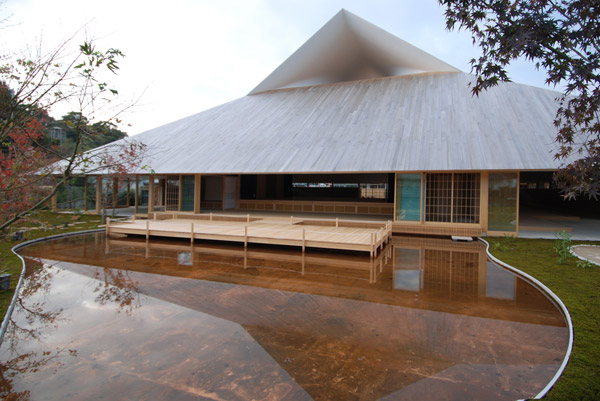
Naoshima Hall (Kagawa, 2015). Image courtesy of Sambuichi Architects
Four recent, pivotal designs by Sambuichi are located on Naoshima, Inujima, and Miyajima, three islands in Japan’s Seto Inland Sea. This includes the Inujima Seirensho Art Museum, a former copper refinery-turned-museum; the Miyajima Misen Observatory, located atop Mt. Misen in Miyajima with two UNESCO World Heritage Sites (Itsukushima shrine and Misen Primeval Forest); the Naoshima Hall, a community space for residents of the island; and House in Naoshima – Matabe, a private residence featuring spectacular wooden roofs entirely made from local hinoki wood, in sharp, triangular structures inspired by traditional Japanese architecture.
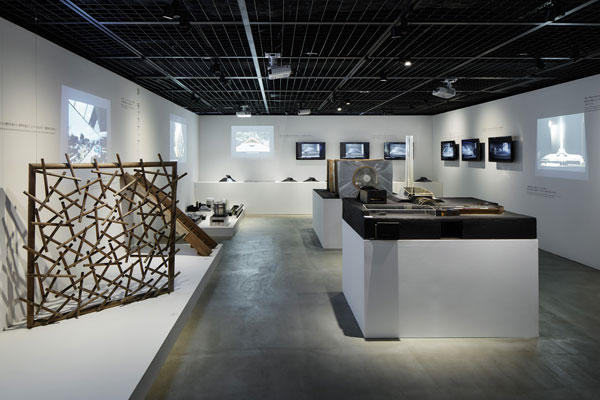
Moving Materials. Image courtesy of Nacasa & Partners Inc
We spoke with the Japanese architect, during his current exhibition at TOTO Gallery MA in Tokyo. Titled “Moving Materials,” the exhibition presents some of Sambuichi’s original models and sketches, including numerical analysis and algorithms in his research, such as Computational Fluid Dynamics and small-scale wind tunnels, providing an insight into the design process and thinking of the architect.
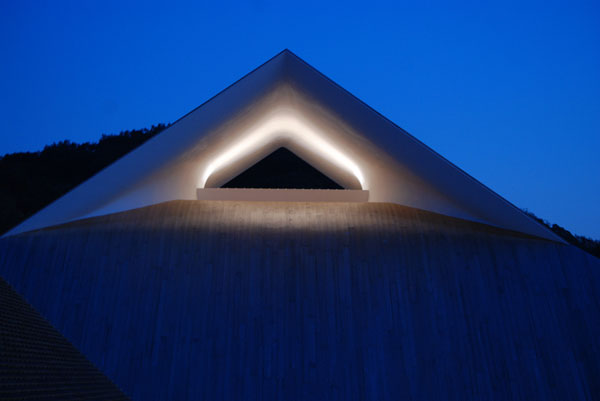
Naoshima Hall (Kagawa, 2015). Image courtesy of Sambuichi Architects
Being born in the Setouchi Region, did you have a strong connection to nature when you were growing up?
I was born and raised in the Seto Inland Sea surrounded by the ocean, mountains, and islands, which made me more connected and familiar with nature. Against the background of Itsukushima shrine and Misen Primeval Forest, the feeling of the calm, ebb and flow of the ocean tide is what I grew up with, and has influenced my way of thinking, inspiring my ideas.
You work with physical experiments, on-site tests and computational simulation. What other technology do you explore?
It depends on the project. First I study the location and decide what is necessary simulate. In each case, we aim to explore the most suitable experimental methods, and aim to explore each simulation method. I usually visit each location numerous times for more research, to further understand the area as much as possible, locally and directly. Then I think about a method of experiment and simulation.
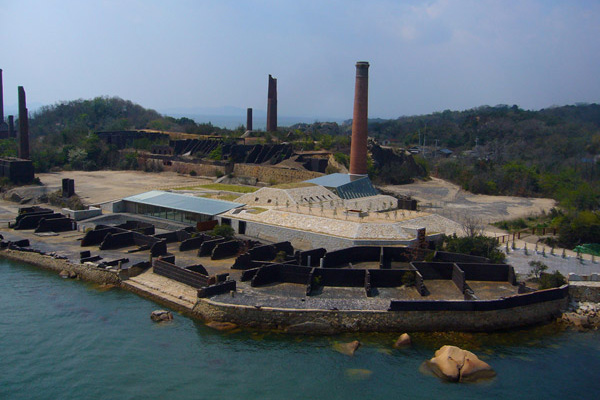
Inujima Seirensho Art Museum (Okayama, 2008). Architect: Hiroshi Sambuichi. Art: Yukinori Yanagi. Operated by: Fukutake Foundation. Image courtesy of Sambuichi Architects.
How did your works at Setouchi (The Naoshima Plan, Inujima Sereinsho Art Museum) come about?
After seeing my ‘Sloping North House’, the Executive Adviser of Benesse Holdings, Inc., Mr. Soichiro Fukutake, contacted me to design the Inujima Seirensho Art Museum. After the Inujima Seirensho Art Museum was complete, we received another design request from Mr. Fukutake for a private house project in Naoshima, “Matabe”. Just around that time, the Naoshima council was also planning the “Naoshima Hall” project, and Mr. Fukutake put a recommendation forward for me as the architect. After a formal request from the Naoshima council, I began the project.
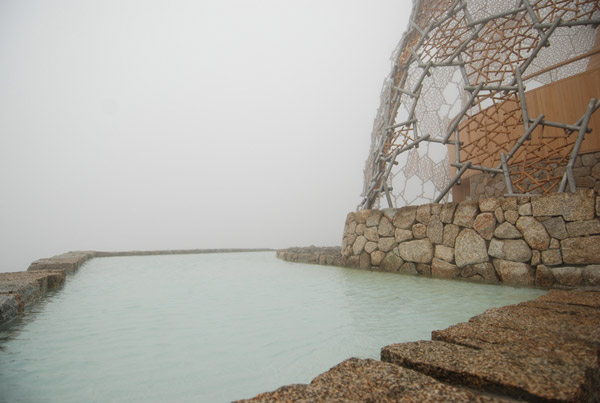
Miyajima Misen Observatory (Hyogo, 2010). Image courtesy of Sambuichi Architects
Using hinoki wood (cypress tree) in your designs, your work is closely related to nature itself too. Why is it a common material in your works?
The tree is deeply connected to Japanese culture and faith, and a strong influence for the economy of Japan. By using wood, we are supporting the forest, pushing the economy, and local craftsmen who have preceded technology and succeeded in technique. In that sense, we want to use local trees as much as possible. In addition, the texture of the wood, feel will be familiar to the sense of the Japanese since ancient times.
Since hinoki wood/ cypress is relatively strong and resistant to water, I often use it for the exterior roofing or walls where it is most visible. To decide which local wood to use, we observe the surrounding environment, and distinguish the suitable type of trees. Rokko Observatory, Miyajima Misen Observatory, Noashima Hall, House in Naoshima – Matabe, and The Inujima Seirensho Art Museum were all projects using hinoki wood and materials.
Is there another artist, designer or architect whom you admire and has greatly influenced you?
The earth. I believe the earth is an eternal partner and teacher.
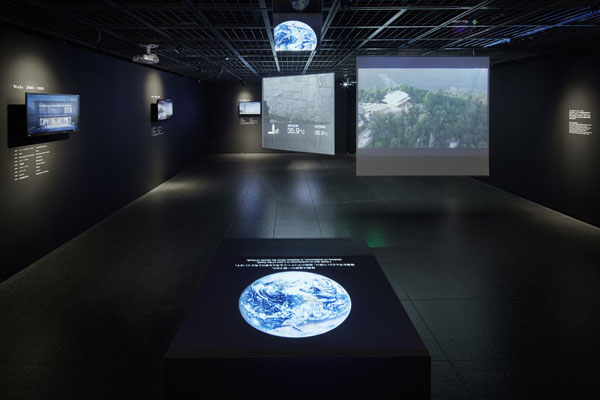
Moving Materials. Image courtesy of Nacasa & Partners Inc
At your current exhibition in TOTO Gallery MA in Tokyo, which showcases your past designs and works, what would you like to teach visitors about your work?
Throughout the exhibition, I hope visitors will feel the material of movement of the Seto Inland Sea area. I would like to convey the charm of the region. I would be delighted if they also decide to visit the actual place, and gain a greater understanding of the different seasons and changes in each location. It is our aim to create a beautiful earth together with people around the world.
What upcoming projects are you currently working on?
The Hiroshima Orizuru Tower will be completed this July. It is being constructed next to Hiroshima Peace Memorial, which is one of the world’s cultural and natural heritage sites. I hope to maintain harmony between a peaceful earth and nature.
Moving Materials, a solo exhibition on the work of Hiroshi Sambuichi, is held from Friday, 15 April to Saturday, 11 June 2016 at TOTO GALLERY·MA.
A searchable and comprehensive guide for specifying leading products and their suppliers
Keep up to date with the latest and greatest from our industry BFF's!

Channelling the enchanting ambience of the Caffè Greco in Rome, Budapest’s historic Gerbeaud, and Grossi Florentino in Melbourne, Ross Didier’s new collection evokes the designer’s affinity for café experience, while delivering refined seating for contemporary hospitality interiors.

Sub-Zero and Wolf’s prestigious Kitchen Design Contest (KDC) has celebrated the very best in kitchen innovation and aesthetics for three decades now. Recognising premier kitchen design professionals from around the globe, the KDC facilitates innovation, style and functionality that pushes boundaries.

In the pursuit of an uplifting synergy between the inner world and the surrounding environment, internationally acclaimed Interior Architect and Designer Lorena Gaxiola transform the vibration of the auspicious number ‘8’ into mesmerising artistry alongside the Feltex design team, brought to you by GH Commercial.
The internet never sleeps! Here's the stuff you might have missed

Salone del Mobile 2024 is only a few weeks away, so we’re highlighting here seven special events, spaces and installations that we’re certainly planning to check out.

Nazcaa boasts a statement design for a singular restaurant and it’s right at home on the Dubai hospitality scene.